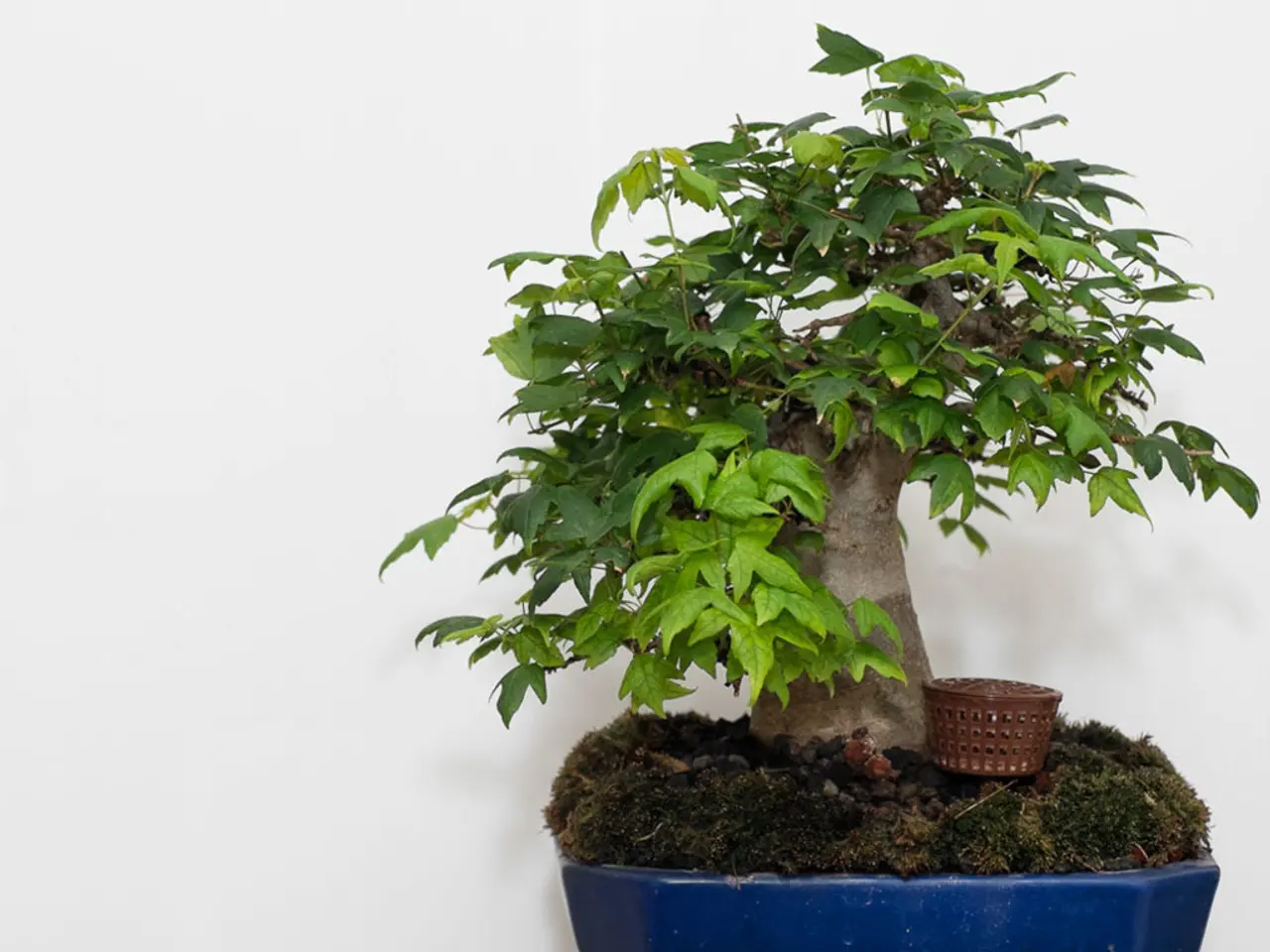Factors and Fluctuations in Bonsai Pricing: An Examination
Bonsai trees, often associated with tranquil gardens and personal growth, are not typically viewed as a lucrative investment opportunity. Instead, they offer a unique way to cultivate a sense of peace and serenity, while also serving as a testament to the dedication and care invested in their development.
As these miniature masterpieces gain popularity, their value has been on the rise. The increasing demand and interest in bonsai cultivation is reflected in the price development of these living art objects. Dedicated workshops and cultivation centers, many with decades of experience, are a testament to the steady growth in the bonsai market.
Older bonsai trees and hard-to-find species command premium prices due to the time, patience, and expertise required to cultivate them. The age of a bonsai is a legacy, with older trees often showcasing intricate branch structures and a majestic presence that adds to their value.
Expensive bonsai species require precise watering, pruning, and fertilization regimens, necessitating meticulous attention to thrive and justify their hefty price tags. Rarity is another factor that drives up prices, with certain varieties like Japanese Maples and specific types of pines being highly sought after.
The historical significance or provenance of the tree can also increase its value. If a tree has been trained by a renowned bonsai master or has been part of a prestigious exhibition, it can command a higher price. Natural growth patterns and characteristics of a species can make certain varieties more challenging to cultivate and train, thereby increasing their value.
Creative freedom allows enthusiasts to innovate and develop unique styles, blending artistic expression with horticultural expertise. This results in one-of-a-kind miniature masterpieces that showcase individuality and skill. Rare or sought-after species, combined with a unique style, can drive up prices and reflect the skill and artistry involved in its creation.
However, it's important to verify the authenticity of a bonsai tree's claimed age. Examine the tree's physical characteristics, such as trunk thickness, branch structure, and root development, and verify the seller's documentation, including records of care, pruning, and repotting. A bonsai's age, historical importance, and ownership history can greatly impact its value.
To safely store and transport your bonsai tree, use a sturdy, well-ventilated container, wrap the pot in a protective covering, and secure the tree in place with soft ties. Minimizing handling helps prevent damage and guarantees a healthy, thriving tree.
In conclusion, bonsai trees, while not typically a lucrative investment, offer a unique way to cultivate personal growth and serenity, and their value as art objects and living plants is on the rise. With the right care, attention, and creative flair, these miniature masterpieces can become cherished possessions that tell the story of their dedication, patience, and the artistry involved in their cultivation.
Read also:
- Understanding Hemorrhagic Gastroenteritis: Key Facts
- Stopping Osteoporosis Treatment: Timeline Considerations
- Expanded Community Health Involvement by CK Birla Hospitals, Jaipur, Maintained Through Consistent Outreach Programs Across Rajasthan
- Abdominal Fat Accumulation: Causes and Strategies for Reduction







